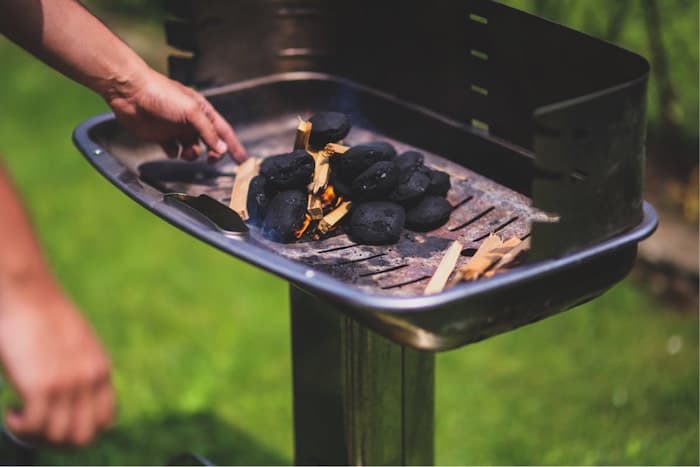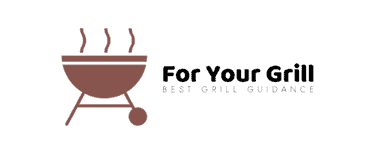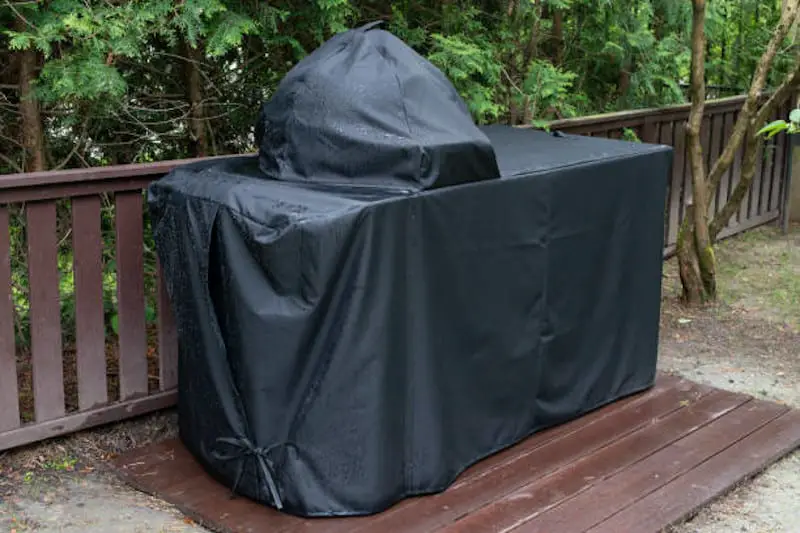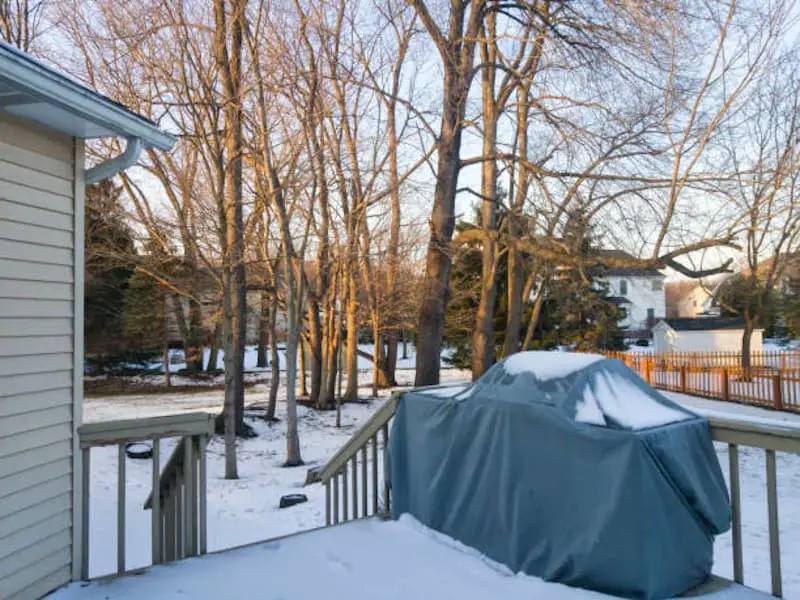
We take great care to scrub our grill clean and wipe it down with oil when we are done with a barbecue, but do we provide as much care and attention to our firebox? What most of us don’t realize is that the firebox is the most important component of a grill, and without it, our BBQ grill is useless.
So, what is a grill firebox? As the name suggests, the firebox is basically a metal container where fuel is burned to cook your food. The firebox is filled with coal, wood, or briquettes for burning, and since it contains a huge amount of heat, it is made of heavy-grade durable material.
Even if all other components of your grill are in perfect condition, if the firebox is poorly made and corroded, your BBQ grill will not work. As a result, you will need to either replace the box or get an entirely new grill.
In this guide, you will learn about:
- The best type of materials used to build fireboxes
- What is an offset firebox
- How to use an offset firebox
- How to maintain your firebox
- How to choose the right firebox
Read on to find out more:
What are the Best Materials for Fireboxes?
A firebox is the most essential part of a gas grill. It is the part that provides heat for cooking purposes, so the material used to make them should be highly heat-resistant and top quality. Most high-quality BBQ grills come with fireboxes made with aluminum or stainless steel.
Aluminum fireboxes have been in use since the 1960s, when outdoor BBQ grills first became all the rage. Meanwhile, stainless steel grills are a newer invention.
Out of these two, many BBQ experts say aluminum fireboxes reign supreme.
Aluminum Fireboxes
The biggest reason why aluminum fireboxes are preferred is because they are highly durable. Aluminum is “self-healing,” which means it is highly resistant to scratches, so you don’t have to worry about scrubbing across the grain and damaging its finish. Aluminum also does not corrode, tarnish, or discolor from intense heat. In fact, many aluminum fireboxes outlast the other grill components.
The only issue you may face with a cast-aluminum firebox is that its paint will fade.
However, this is a small price to pay considering cast-aluminum fireboxes hold heat even better than stainless steel fireboxes.
However, there are good-quality and low-quality fireboxes made from aluminum as well.
Cast aluminum fireboxes are made by pouring molten aluminum into a mold and then allowing it to cool down slowly. The slow pouring and cooling allow more gas to escape from the metal, resulting in a less porous, denser, and stronger firebox. Since the process is time-consuming, you will only find cast aluminum fireboxes in high-quality grills, which are a bit expensive.
In contrast, low-quality aluminum fireboxes are made using the die-cast technique. This involves injecting pressurized molten aluminum into a mold which is cooled quickly. The quick process does not allow gases to escape, and as a result, die-cast aluminum fireboxes are more porous and thinner than cast aluminum fireboxes. This means they do not contain heat as well as high-quality aluminum fireboxes, and are also quite weak so they are prone to melting from the intense heat of the fire. Since they are less time-consuming to produce and less aluminum is used in making them, they are cheaper — so you get what you pay for.
Stainless Steel Fireboxes
Despite the many virtues of aluminum fireboxes, you may have seen many people use stainless steel fireboxes. That is because stainless steel grills look so much more attractive. The beautiful shine on the steel gives your grill a more expensive and high-end look.
High-quality stainless steel fireboxes can be good choices for your grill, but they do not work any better than cast aluminum fireboxes. They are also much expensive than the humble aluminum — because they look more upscale and are high in demand — and they require more maintenance to keep them looking shiny and new.
There are different types of stainless steel fireboxes, as well.
If you want your firebox to be long-lasting, you should make sure they do not consist of anything less than a 304 stainless steel, which is quite thick. As far as other components of the grill are concerned, the thickness is not of great concern, but the quality of the steel should at least be 304.
Another thing that you need to take into consideration when you are purchasing a grill is the fasteners that are used to hang things on the firebox. These should be made of good quality stainless steel as any other material will rust in no time. If that happens, you will need to remove the rusted screws and bolts, which can take a lot of time, money, and effort.
What is a Side Firebox?

In most grills, the firebox (see Amazon) is situated at the bottom of the grilling system, but in some grills, especially those designed for smoking, the firebox is offset and situated to the side of the grill. The firebox is attached to a large barrel, which allows the smoke to flow in and slow-cook the food over many hours.
The benefit of an offset firebox in a smoker is that they are ideal for cooking meat at stable temperatures, usually around 225 degrees Fahrenheit. The smoke and heat from the firebox enter into the smoking chamber and goes out through a chimney, imparting a smoky flavor to the meat, depending on the type of fuel or fuel supplement used.
Offset fireboxes can be run on pure wood chips, which can result in indirect heat and smoke, which gently cooks meat over a long period of time. They can also run on charcoal supplemented with wood chips or chunks to give you an authentic smoky flavor.
How to Use an Offset Firebox

There are many grills that come with offset fireboxes; however, if your grill doesn’t have one, you can simply buy and add one.
Offset smokers and fireboxes can look intimidating, but they are pretty easy to use once you understand how to regulate the heat. Here are the steps to use a smoker with an offset firebox:
Season the Smoker and the Firebox: If you are using your firebox and smoker for the very first time, wipe them down with some soapy water and let them dry. The open all the vents in the smoker, add wood, coal or briquettes to the firebox and light them up. You can dampen the fire after 30 minutes or start the cooking process after that.
Open Air Intake Vent on the Firebox: Since oxygen is essential for the fire to burn, you need to open up the air intake vent located on the side of the firebox. You should also open the chimney vents to let out excess smoke and regulate the heat inside the smoker.
Spread the Fuel in the Firebox: Take some briquettes and light them up until they begin to turn white from the ash. This should take about 15 minutes. Once they have achieved the temperature, pour them into the firebox. Adding a few pieces of hardwood chips or logs can help you achieve a nice flavor to your smoke. Some great wooden fuel supplements include mesquite, apple, maple, and hickory wood.
Regulate the Temperature: The temperature inside the smoker should be around 225 to 275 degrees Fahrenheit. If you want to increase or maintain the temperature inside the smoker, add a few more unlit briquettes to the firebox. Use a poker to shove the ashy coals to one side of the firebox and dump the new briquettes on the other side.
Increasing the Temperature: If you feel that the temperature in the smoker is falling despite the addition of new briquettes, you can simply dump a log of wood inside the firebox. Make sure the air vent on the side of the firebox is open and unblocked so that plenty of air can get inside and fan the fire inside.
Reducing the Temperature: If the temperature inside the smoker has risen too high, you can open up the hood of the cooking chamber to release any excess heat. You can also take out a few burning coals from inside the firebox to bring down the temperature.
Imparting Smoky Flavor to the Food: If you want to impart a nice flavor to your food, you can take a couple of large chunks of wood and place them into the firebox every hour or two. The wood logs should be placed next to the fire, instead of directly on it, so that it smolders rather than burns out quickly. This is why you shouldn’t use wood chips since they can combust quickly. To get the best type of flavors, hardwoods, nutwoods, and fruitwoods should be used. Some people like to soak their wood in water before placing it in a firebox, but you shouldn’t do that since the moisture can cool off the heat inside the firebox.
Placing a Water Pan in the Firebox: Since smoking meat may also dry it out, you can introduce moisture to prevent that from happening. You can do this by placing a metal rack over the coals in the firebox and putting an aluminum or stainless steel pan of water over it. This will ensure the smoke that goes into the cooking chamber is laden with more moisture.
How to Maintain a Firebox
The firebox is perhaps the most neglected part of your BBQ grill. If you don’t check it out regularly, you may miss if it develops a hole or if some of its components wear down. Not only will a damaged firebox not offer your meat the optimum heat to cook, but it can also be very dangerous as escaped gasses can combust.
Fortunately, you do not need much to ensure your firebox remains good as new. A firebox made with high-quality aluminum and stainless steel can last you for decades.
How to Clean a Firebox
It doesn’t take much to restore your firebox. Although, you may wipe and polish the exterior of the firebox, the interior, which is where combustion takes place, also require some attention. Since a firebox operates in high temperatures, the insides will be matted with soot and grime.
To remove the caked ash, take out all the parts inside the firebox, and remove the firebox form its frame. This will allow you better excess to the interior, and you can clean it more efficiently.
Take a cup wire brush and an angle grinder to scrub off the stubborn residue from the walls and floor of the firebox. You can also use a putty knife to do a good job. Take out the loose residue and wipe down the firebox with some vinegar to impart an extra shine.
That should do the job.
You may also discover that come components of the firebox may have worn down from use. These parts include the burner tubes, igniters, cooking grates, flavorizer bars, screws, and the plastic hinge on the side burner cover.
You should replace them if you want your firebox to run for a long time.
How to Repaint a Firebox
The paint on your firebox will be the first thing to go, and that’s natural since paint cannot withstand the intense amount of heat in the firebox. So, if you use aluminum fireboxes, you will find your paint will peel and fade away in a couple of years. This can certainly ruin the aesthetics of your grill. However, repainting your firebox is the easiest thing to do.
Note, though, that you only need to paint the outside of your firebox, not the inside. The process is quite simple.
Take a paint scraper, sandpaper, or a wired brush to scrub off any remaining paint from the firebox. If there are some flaky spots on the exterior, rub them down with sandpaper to make them smooth and paint-ready.
You don’t need to remove the firebox from the frame to paint it if you don’t want to. Just cover the other nearby components with newspaper and masking tape so that the paint does not go where it is not wanted.
Then take a can of high-temp spray paint that can withstand heat and repaint your firebox. Make a thin layer of paint and then coat it over with another layer. Two thin coats are much better than a single thick coat since it won’t be easily chipped.
Depending on the type of grill you have, you can also repaint your lid end caps the same way.
Once your firebox is painted, it will look sleek and shiny and good as new. Just remember that you may need to repaint it a couple of years later.
How Do You Choose Which Grill Has the Right Firebox
Your firebox offers two types of heat: direct heat or indirect heat.
If your grill or smoker has a firebox directly beneath the grate, than that means it offers you direct heat. If the firebox is offset and located to the side, then your firebox offers you indirect heat.
The main thing about direct heat is that it may cook your meat quicker in grill-style, rather than take it through the slower process of smoking. You can regulate the heat from a firebox that is situated directly beneath the grill by placing a pan of water on top so that the temperature in your smoker remains lower.
No matter what type of firebox you have, you need to keep a few things in mind:
Firebox Size and Shape
Most BBQ experts say that a firebox that is one-third the size of the cooking chamber is the optimum size. Additionally, a firebox that is round rather than square-shaped conducts heat much better.
Round fireboxes offer more stable heat transfer since heat wants to go upwards, not sideways. Hence, if the firebox is square, the heat will get trapped at the top, and the air from the vent will push it sideways. This means you will get sporadic bursts of really intense heat and cooler heat, which may result in uneven cooking.
So if you have a square firebox, you can place a hole at the top and fit it with a 90-degree angle pipe that leads to the smoke chamber.
With a round firebox, some people also say you may need to place to more vents below the grate in the middle, one on each side, to conduct optimum heat. The vent on the side of the firebox just doesn’t get it. However, this may depend on the model and manufacturer of your firebox.
Related Article: What Is The Standard Grill Size?
Bottom Line
You may be more interested in the smoked meat in your BBQ grill, but if your firebox fails you, you will never get the chance to sink your teeth in the succulent food. To ensure you do not meet with disappointment, make sure you buy a grill with a firebox made of high-quality aluminum or stainless steel.
Depending on whether you want to grill your meat or smoke it, you can decide whether you want a firebox directly beneath the grill or an offset firebox.
Just remember that maintaining the firebox every few months is the key to its longevity.
Happy barbecuing!
See Also:
How To Secure a Grill to Concrete
3 Best Charcoal Grills for Skewers
Broil King Baron 320 vs Signet 320: Which Is Better
Why Don’t Gas Grills Use Lava Rocks Anymore



